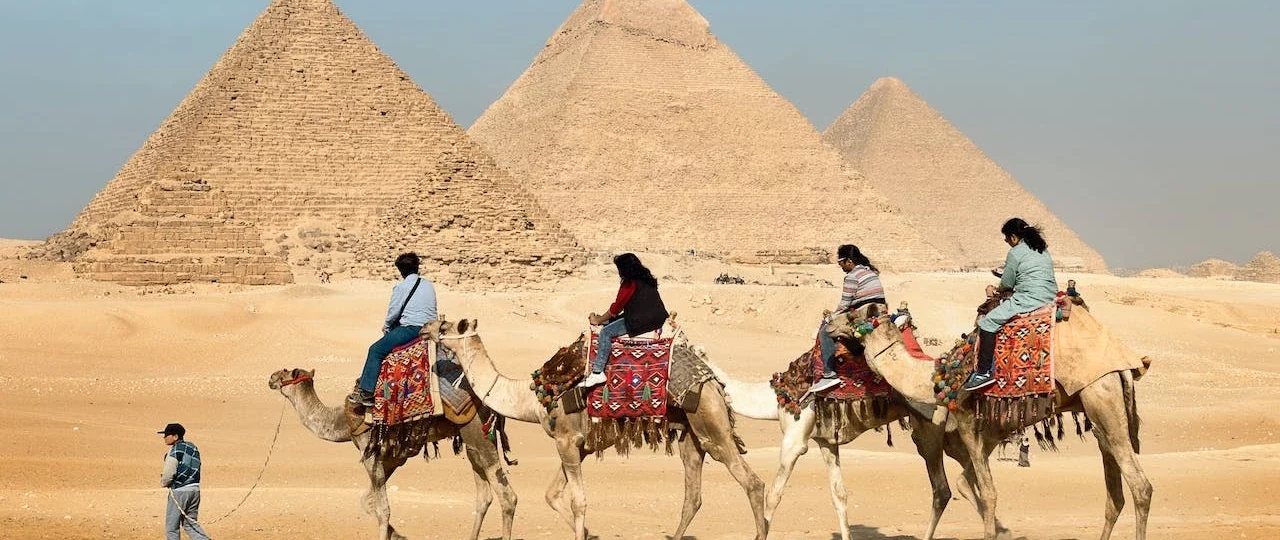Revealing the Mysteries of the Giza Pyramids
Standing tall along the western bank of the Nile River just outside Cairo lies one of the most iconic ancient sites in the world – the Giza Necropolis. Home to the three imposing Great Pyramids of Giza and the enigmatic Great Sphinx, this UNESCO World Heritage Site has attracted visitors and scholars for centuries who seek to unravel its architectural mysteries and understand the civilization that built such monumental structures over 4,500 years ago.
In this in-depth guide, we’ll explore the history and secrets of the Giza Pyramids, delving into their construction techniques, hidden chambers and passageways, ancient carvings and hieroglyphs that provide clues about pharaonic rituals, and what archaeologists have uncovered about daily life in the workers’ villages that supported these megalithic projects.
An Overview of the Giza Necropolis
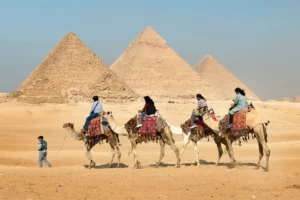
Spanning an area of around 5.3 square kilometers on the Giza Plateau, the Giza Necropolis served as the royal burial ground for several pharaohs and their families during Egypt’s Old Kingdom period from around 2575 BC to 2465 BC. At its center stand the three main pyramids known as Khufu, Khafre and Menkaure. Khufu’s Great Pyramid, also called the Pyramid of Cheops, is considered the oldest and largest of the three, standing an original height of 481 feet. Khafre’s pyramid, which incorporates the famed Sphinx, is the second largest. The third and smallest pyramid belongs to Menkaure.
In addition to housing the pharaohs’ burial chambers and tombs, the Giza Necropolis contained several mortuary temples and smaller pyramids built for queens and princes. The entire complex was enclosed within a limestone wall approximately 2.5 miles long to demarcate the sacred grounds. Outside this perimeter, archaeologists have excavated extensive cemeteries and workers’ villages that supported the development and maintenance of the royal tombs. With its collection of massive stone structures precisely arranged across the desert landscape, the Giza Plateau left future civilizations in awe of the technological feats and organizational capabilities of its creators, the ancient Egyptians.
The Great Pyramid of Khufu
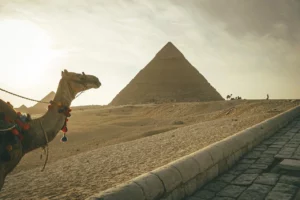
As the oldest and largest of the Giza pyramids at 481 feet tall, Khufu’s monumental tomb has captivated visitors for millennia with its sheer scale and the mystery of its construction. Made from an estimated 2.3 million limestone blocks with a precision that can still be measured in millimeters, this pyramid housed various burial chambers for Khufu and was surrounded by three smaller satellite pyramids and several mortuary temples. Its sheer mass required an estimated 2.3 million stone blocks, with the heaviest weighing up to 15 tons each.
One of the enduring mysteries is how the Egyptians were able to transport and precisely position these gigantic stones without modern machinery. While some experts theorize ramps and levers were used, the exact methods remain unclear. Within the pyramid’s limestone and granite chambers, archaeologists have discovered several clues about Khufu’s burial. Secret passages and shafts were incorporated into the structure’s design to confuse grave robbers and protect the pharaoh’s remains. The King’s Chamber at the pyramid’s center was left empty and uninscribed, with Khufu’s name appearing instead in a ventilation shaft high above – another tactic to conceal his final resting place.
Climbing down narrow passages today provides a glimpse into how the pyramid was constructed from the inside out in smooth casing stones. The tight tunnels and low ceilings heightened the danger and difficulty of building such an immense structure. Modern imaging has also detected unseen internal structures and cavities that may house additional undiscovered chambers. As the sole survivor of the ancient Seven Wonders of the World, Khufu’s pyramid continues to amaze visitors with its sheer scale and the industriousness and astronomical knowledge of its creators.
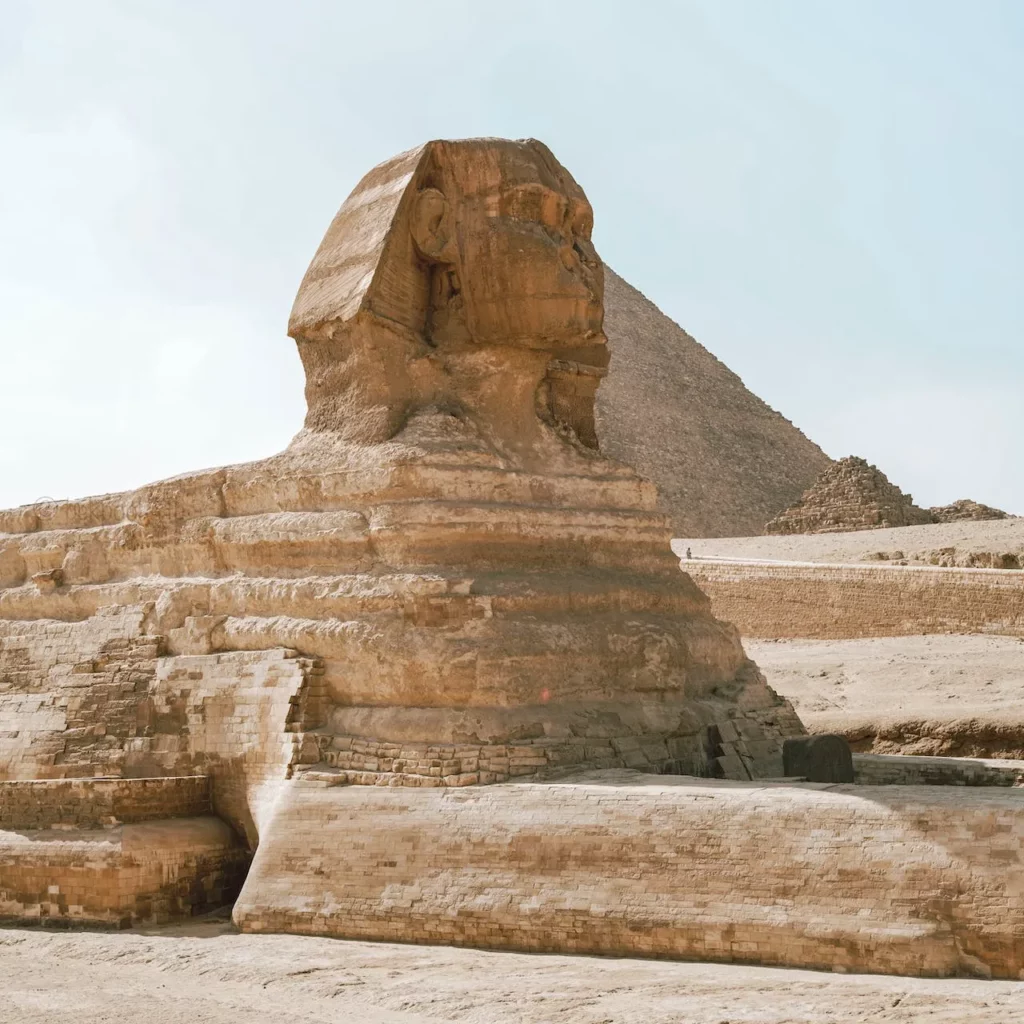
Khafre’s Pyramid and the Great Sphinx
Standing just northeast of Khufu’s monument is the second largest of the Giza pyramids, belonging to Khufu’s son Khafre. Measuring at 471 feet in height originally, this pyramid features a steeper inclination of its casing stones that creates the optical illusion it rises higher than its predecessor. Khafre’s pyramid also incorporates several architectural innovations, including interior relieving chambers that reduced pressure on the stonework.
Alongside the pyramid, Khafre had constructed one of the most iconic statues in history – the famed Great Sphinx. Carved from limestone bedrock and measuring 240 feet long with a lion’s body and a pharaoh’s head, scholars believe this sculpture was meant to guard Khafre’s tomb in the afterlife. While some debate whether it depicts Khafre or a earlier king, its weathered features stare out across the sands, a mysterious sentinel from antiquity.
Nearby ruins of Khafre’s Valley Temple and Causeway provided access between the pyramid and the Nile. Within the temple’s stone walls, archaeologists have discovered rare carvings depicting Old Kingdom boat processions and rituals associated with pharaonic burial ceremonies. These invaluable images offer a window into ancient Egyptian religious practices and funerary rites that were an integral part of pyramid construction. The complex layout and artistic programs of Khafre’s monuments demonstrate the increased prestige and wealth of the 4th Dynasty royal family under his reign.
The Pyramid of Menkaure
Built by Khafre’s son Menkaure, the third and smallest of the main Giza pyramids stands at 215 feet tall. Despite humbler dimensions compared to its predecessors, Menkaure’s pyramid still represented a remarkable feat of engineering. Its smooth limestone casing and granite interior chambers demonstrated evolving architectural innovations. Within its tunnels, visitors can observe changes in construction techniques that foreshadowed later 5th and 6th Dynasty pyramids.
Nearby, the ruins of Menkaure’s mortuary temple and valley building mark where rituals were once performed for the deceased king’s ascension to the afterlife. The complex layout of his monuments, though smaller in scale, paralleled the designs of Khafre’s structures as a symbol of royal power. Together, the three pyramids and their associated temples formed a united necropolis for Khufu’s royal lineage and demonstrated the pinnacle of pyramid construction achievements under their reign in the Old Kingdom.
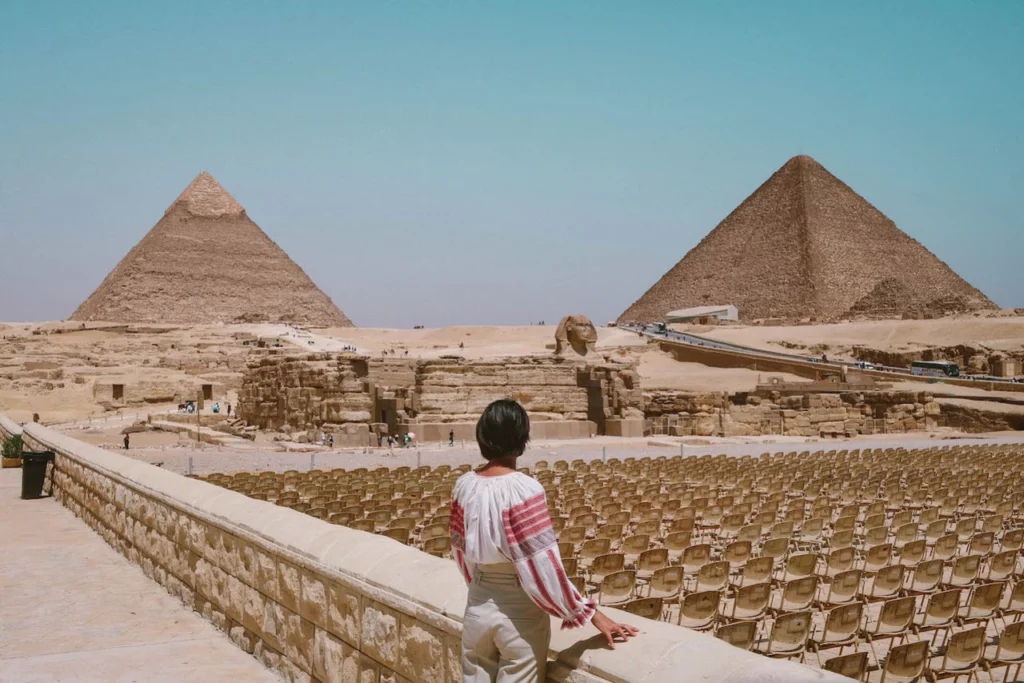
Beyond the Pyramids: Workers’ Towns and Daily Life
To support the massive labor needed for quarrying, transporting and setting millions of stone blocks, the Giza Plateau was surrounded by extensive settlements housing tens of thousands of workers and their families. Recent excavations have uncovered several of these towns just outside the ancient limestone perimeter wall. Archaeologists have discovered everything from stone and wood dwellings to butchering areas, pottery workshops and cemeteries.
Analysis of skeletal remains indicates the pyramid laborers endured considerable physical stress and risks from carrying heavy loads. Their diet was mainly based around bread, beer and onions. After work, workers would have enjoyed leisure activities like board games and music, as evidenced by recovered game pieces and flutes. Overseeing this vast labor force was a hierarchy of supervisors, scribes and priests. Papyrus documents also describe a complex taxation system to provision the settlements.
Together, these discoveries are transforming our understanding of how whole communities were organized to make projects like the pyramids possible through collaborative efforts spanning generations. The Giza Plateau was thus much more than just tombs – it was the beating heart of a bustling industrial center that advanced ancient engineering skills and helped establish Egypt as one of the first nation states in history.
Secrets Still to Uncover
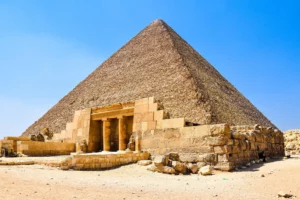
After thousands of years with their stone facades weathered but still standing strong, the Giza pyramids continue yielding new discoveries as modern technology like thermal imaging and tiny cameras peer into previously inaccessible areas. Just last year, an empty void was detected deep within the Great Pyramid that may lead to as-yet unexplored tunnels or chambers. Other monuments like Khafre’s pyramid and the Sphinx are also believed to contain interior spaces that future archaeologists may access.
Meanwhile, the surrounding plateau holds many more buried secrets under the desert sands. Recent satellite imaging has detected entire paved roads, temples and even possible additional pyramids that await full excavation. As Egyptologists continue piecing together fragments of ancient papyri, carvings and artifacts, new clues emerge about the pharaohs honored here, their religious and political roles, and daily life in the shadow of these iconic stone giants. After over 4 millennia, the mysteries of the Giza Necropolis show no signs of being fully solved. They will surely continue to inspire wonder and academic study for many more generations to come.
I hope this in-depth guide has provided you with a new understanding and appreciation for the incredible architectural and cultural achievements represented by the Giza Pyramids. Their construction was truly one of the most ambitious undertakings in ancient history. Please let me know if you need any other information to enhance your visit and exploration of this iconic UNESCO World Heritage Site.

